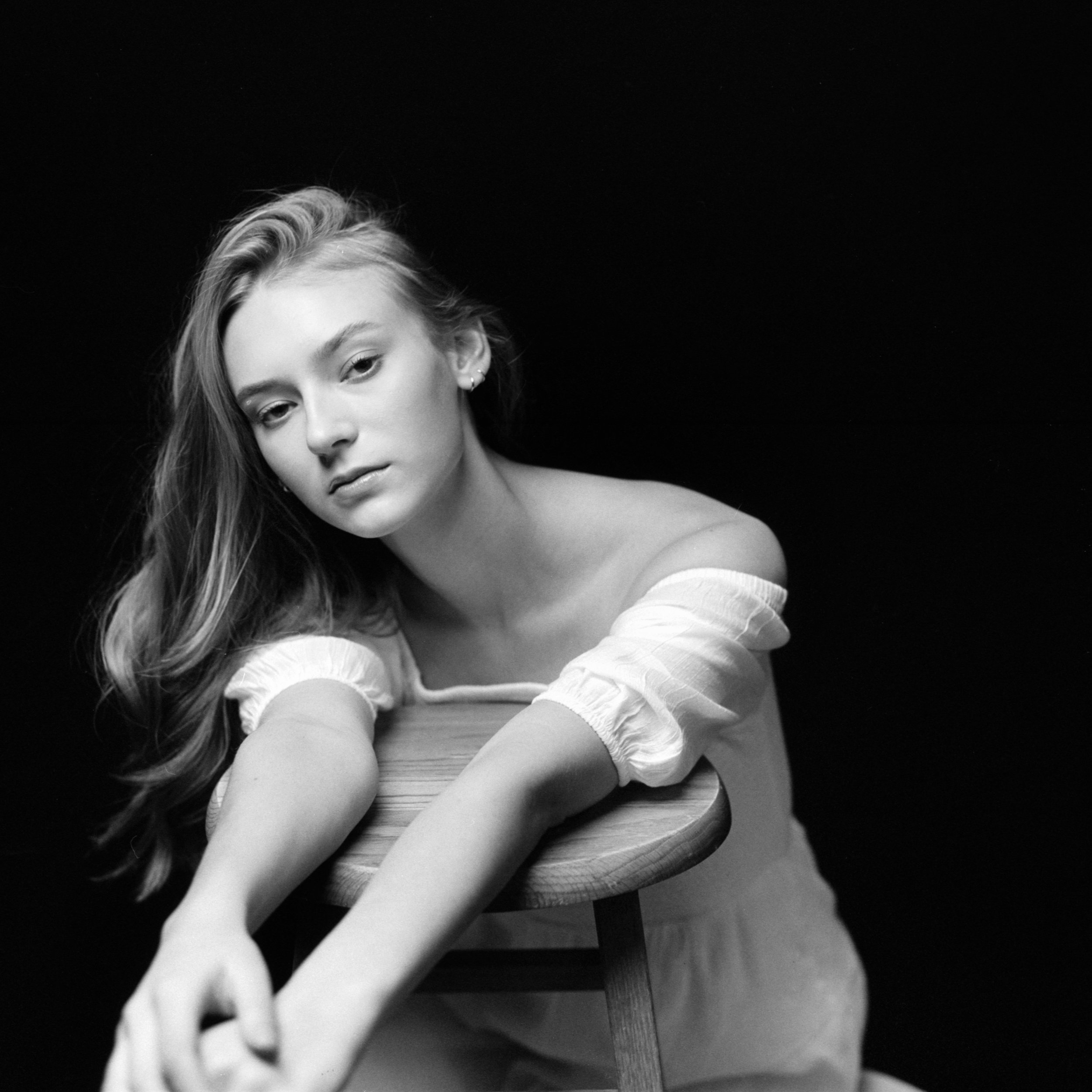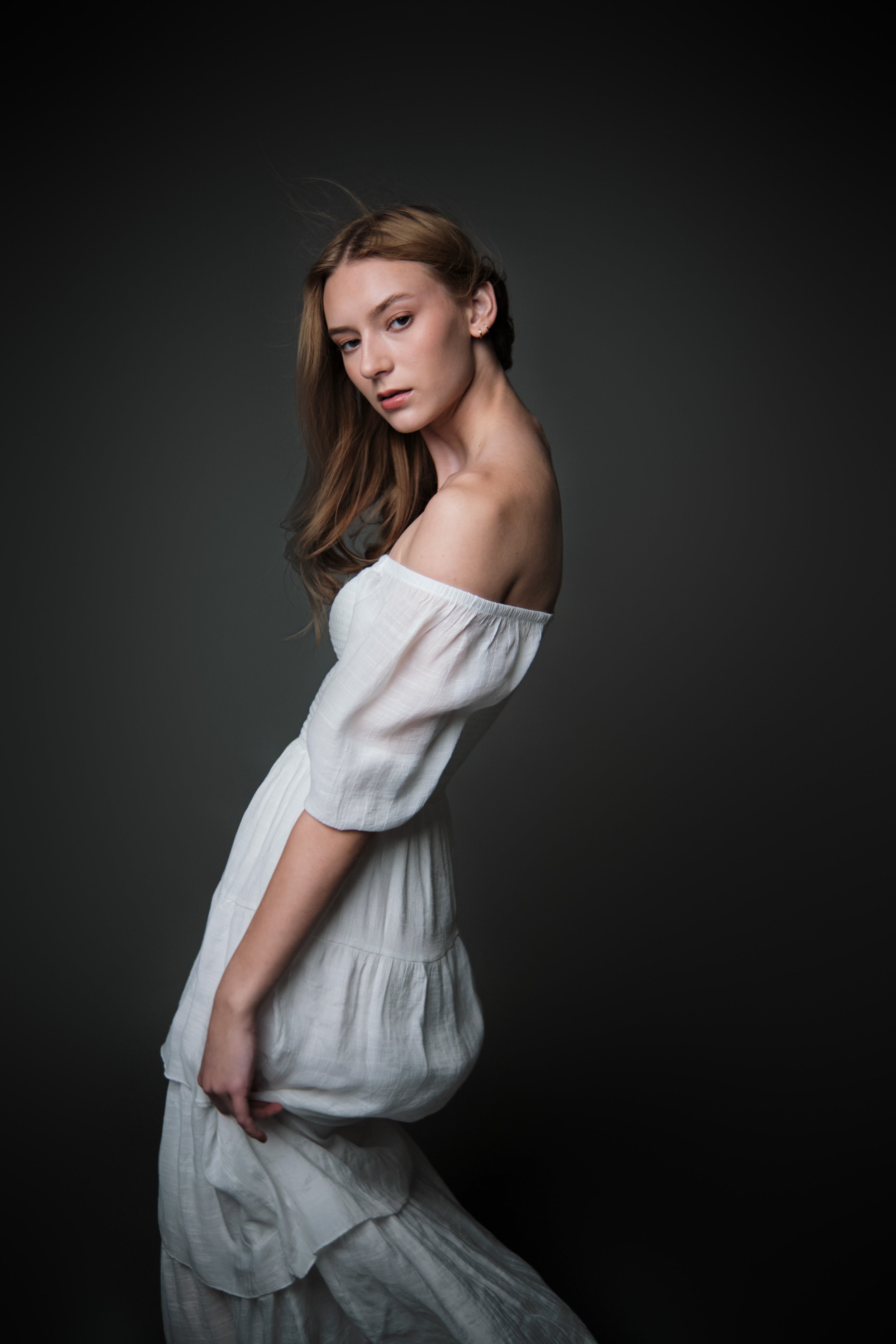A Medium Format Film Fashion Shoot with the Pentax 6x7, SMC Takumar 105mm F/2.4, and Kodak Tri-X 400 Film
The process of shooting film slows me down in the best possible way, making me think more about composition, expression, and making each image count.
It may not have the sharpness of digital, but for painterly portraiture, film is able to achieve a look that can take a lot of processing and editing to get out of a digital image.
Pentax 6x7, Takumar 105mm F/2.4 shot wide open. Model: McKenna Vereeke
The Camera
After some months of shooting on digital only, I was excited to bring out my beloved Pentax 6x7 again, this time for a fashion and beauty studio shoot with the very talented McKenna Vereeke (West Model Agency).
I started out in digital photography and I’m just now discovering the world of film photography. For someone who has only used DSLRs, the Pentax 6x7 offers a body style that is familiar, unlike a Hasselblad medium format camera or a Twin Lens Reflex camera like the Rolleiflex. The Pentax 6x7 is built like a tank, it’s easy to operate, and the built in light meter is very accurate.
The Lens
The Pentax Super Multi Coated Takumar 105mm F/2.4 is one of the most sought after medium format lenses. A perfect focal length for portraits, it’s a legendary lens that is sharp (enough) wide open with exceptionally beautiful rendering. Yes, it can be a challenge to nail focus at at F/2.4 but it’s worth taking the time to try! I highly recommend mounting the camera on a tripod.
The Film Stock
Kodak Tri-X is quickly becoming my favorite film stock. It is high contrast, but not in a way that overpowers the microcontrast transitions between highlights and shadows. The rendering is painterly, with deep shadows and blacks that have an dark, syrupy richness that I’ve found hard to achieve with other film stocks.
At the start of this photoshoot I was finishing off a roll of Ilford HP5 400 - here’s that image:
Pentax 6x7, Takumar 105mm F/2.4 shot wide open with Ilford HP5 400.
Comparing the Ilford HP5 look to Kodak Tri-X, you can see a big difference in the rendering:
Pentax 6x7, Takumar 105mm F/2.4 shot wide open with Kodak Tri-X 400.
Film vs. Digital
The process of shooting film slows me down in the best possible way, making me think more about composition, expression, and making each image count.
It may not have the sharpness of digital, but for painterly portraiture, film is able to achieve a look that can take a lot of processing and editing to get out of a digital image.
Film photos have an organic bloom to the highlights, giving a beautiful glow not unlike a Pro Mist filter on a modern lens.
Digital - Fujifilm XT4 with Fujifilm XF33mm F/1.4 shot wide open
Pentax 6x7, Takumar 105mm F/2.4 shot wide open with Kodak Tri-X 400.
Here are a few more film shots from our session:
Thank you for reading.
What is your favorite medium format camera, lens, and film stock combination?
Please share your thoughts!










